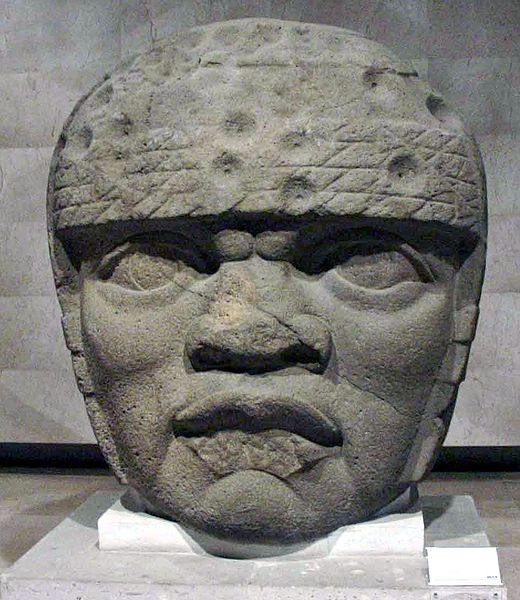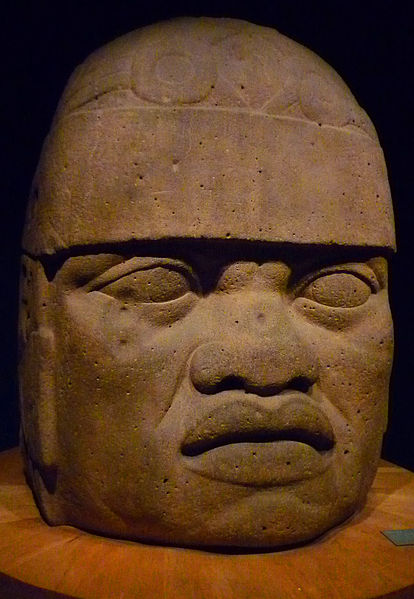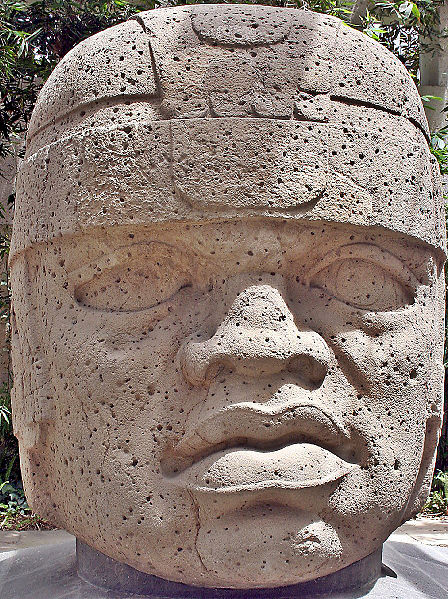The civilization that created these colossal sculptures of heads and others like it, the Olmec Civilization, predates the Maya and Aztec civilizations in Mesoamerica. On the average, these huge heads carved from large boulders are nearly eight feet tall.
Very possibly, the features are those of specific Olmec rulers or each represents a particular dynasty. The features are of a type that is still common today in Tobasco and Veracruz. All of the heads have a helmet-like headdress, which may be the attire of a ruler or the helmets worn for the ritualistic Mesoamerican ballgame that often featured human sacrifice.
All seventeen of the surviving heads were carved from volcanic basalt from the Sierra de los Tuxtlas mountain of Veracruz, which is almost one hundred miles away from their final destination.
Archeologists found these sculptures arranged in lines or groups in important Olmec centers, clearly indicating a ritualistic function.
- Colossal Head #3 from San Lorenzo, c. 900 BCE, basalt, 5’8” x 5’3”, Museo de Antropología de Xalapa, Veracruz, Photo by Maribel Ponce Ixba, Creative Commons Attribution License via Wikimedia Commons.
- Colossal Head #6 from San Lorenzo, c. 900 BCE, basalt, 5’5” x 4’6”, Museo de Antropología de Xalapa, Veracruz, Photo by Maunus and released into the Public Domain via Wikimedia Commons.
- Colossal Head #1 from San Lorenzo, c. 900 BCE, basalt, 9’3” x 6’9”, Museo de Antropología de Xalapa, Veracruz, Public Domain via Wikimedia Commons.
Recommended Reading






